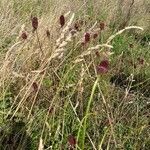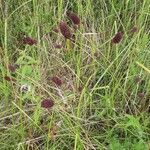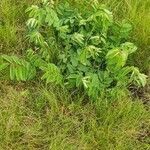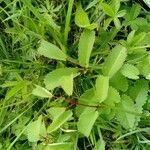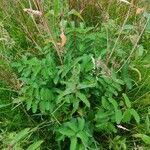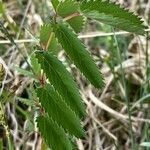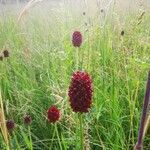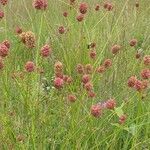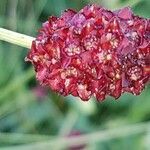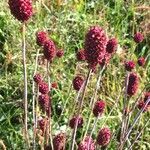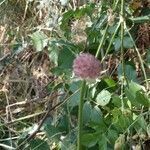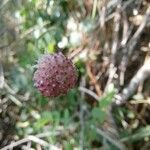Herbs perennial, 30–120 cm tall. Rootstock brown or purple-brown, robust, usually fusiform, rarely terete, cross section yellow-white or purple. Stems erect, angular, glabrous, or base pilose or sparsely glandular hairy. Radical leaves: stipules brown, membranous, glabrous or abaxially sparsely glandular hairy; petiole long, glabrous or sparsely glandular, base sheathing and imbricate, sometimes sparsely glandular hairy; leaf blade with 4–6 pairs of leaflets; leaflets petiolulate, green on both surfaces, ovate, oblong-ovate, fasciated oblong, or fasciated lanceolate, 1–7 × 0.5–3 cm, base cordate to broadly cuneate, margin coarsely obtusely or rarely acutely serrate, both surfaces glabrous or abaxially sparsely pilose; cauline leaves: stipules large, semiovate, herbaceous, margin acutely serrate; leaflets shortly petiolulate or sessile, oblong to oblong-lanceolate, base subcordate to rounded, apex acute. Inflorescences erect, spicate, ellipsoid, cylindric, or ovoid, usually 1–6 × 0.5–1 cm, flowering from apex to base; rachis glabrous or occasionally sparsely glandular hairy; bracts lanceolate, shorter than or nearly equaling sepals, membranous, abaxially pilose, apex acuminate to caudate. Sepals 4, purple, red, pink, or white, elliptic to broadly ovate, abaxially pilose, with faint longitudinal midvein, usually with shortly acute apex. Stamens 4; filaments filiform, 0.5–1 × as long as sepals, exserted beyond them or not. Ovary glabrous or puberulous; stigma dilated, discoid, margin fimbriate-papillate. Fruiting hypanthium longitudinally 4-ribbed. Fl. and fr. Jul–Nov.
More
A shrub. It grows 75-90 cm tall. It spreads 60-90 cm wide. It forms clumps. It keeps growing from year to year. The stem is erect, naked and has grooves. It branches near the top. The leaves are medium green. They occur in rings near the base of the plant and are divided into leaflets along the stalk. There are 13 oblong to oval leaflets. These have teeth along the edge. The flowers are deep red or purple. They are in dense heads at the top of the plant.
Plants 3–20 dm. Leaves: blade 5–40 cm, leaflets (7–)11–15, orbiculate to ovate, to 7 × 5 cm, lengths 1.5–2.5 times widths, base cuneate, truncate, rounded, or cordate, without stipels. Spikes 50–250-flowered, ellipsoid or ovoid, main 1.5–3 cm, flowering basipetal. Flowers: calyx lobes dark purple, midveins not thickened distally; stamen lengths ± equal to hypanthium lobes, filaments 1.5–2.5 mm, filiform throughout. 2n = 56, 112.
Much like no. 1 [Sanguisorba canadensis L.]; stems to 1 m; spikes thickly ellipsoid to short-cylindric, 1–3 cm; stamens equaling or shorter than the purple-brown sep, with filiform red filaments; 2n=28, 56. Native of Eurasia, rarely escaped from cult.
It is a temperate plant. It grows best in moist, well-drained soils. It needs a protected sunny position. It is resistant to frost but sensitive to drought. In China it grows in damp places from sea level to 3,000 m above sea level. It suits hardiness zones 4-8. In Inner Mongolia. In Sichuan and Yunnan.
More
Meadows and wet grassy places by streams. Moist shady sites in grassland, on siliceous soils.
The young leaves are boiled and eaten with oil and salt. They are parboiled and eaten fried, oil-roasted, added to soups or preserved in salt. The leaves are used as a substitute for tea. The root and stems are steamed and dried and used for making Mongolian tea. They are also used for brewing. The seeds are used in the preparation of vinegar.
